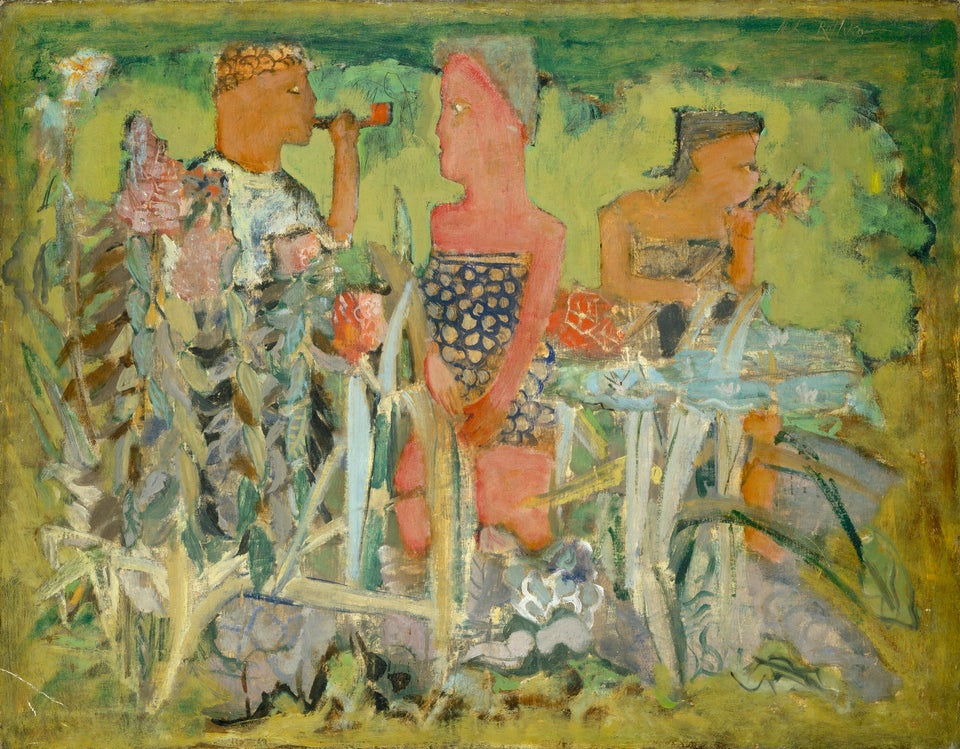Vladimir Umanets approached Mark Rothko's 1958 canvas "Black on Maroon" at the Tate Modern in London on Sunday and scrawled an odd message on the bottom right corner. A blatant act of vandalism, you say? Umanets begs to differ. The artist seems to be part of a long line of attention getters who desecrate a work of art as a means of getting their own vision into a museum.
A visitor named Tim Wright was at the Tate Modern when the act occurred; he tweeted the events to a rapidly interested audience last night until #rothko was trending.
The graffiti on the bottom right side of Rothko's painting reads "Vladimir Umanets '12: A potential piece of yellowism." In case you were wondering, Yellowism refers to the art movement founded by -- you guessed it -- Umanets, along with fellow art provocateur Marcyn Lodyga. Its manifesto describes the movement as "not art or anti-art." In fact, "Every piece of yellowism is about yellow and nothing more." (Well, that clears things up.)
According to Reuters, police called the cell phone number listed on the Yellowism website and Umamets answered, affirming that he did in fact write over Rothko's painting, but "I didn't destroy the picture." Instead, he clarified, it was not vandalism, but a nod to Marcel Duchamp -- an artist who is best known for hanging a urinal in a museum in order to question society's assumptions about acceptable art.
Umanets told Reuters:
Umanets is not the first art vandal to cite art appropriation as the impetus of the crime. Earlier this year Uriel Landeros, also a budding artist, Picasso's 1929 "Woman in a Red Armchair" with the word "Conquista." (For the record, he thought Picasso would be proud.)
Like Landeros, Umanets was not acting out of disdain for the artist, telling BBC he was a big fan of Rothko's work. "Rothko is such a powerful artist. There will never be another Rothko in the world ever," Umanets said, also mentioning his desire to place Rothko's vandalized work "in the context of yellowism." (A compliment to Rothko, we're sure.) The famed American painter, known for his massive color-blocked canvases, has become one of the most valuable artists of our time. In May his "Orange, red, yellow" sold for $86.9 million at Christie's in New York.
The consequences of the crime will likely affect Rothko fans' ability to interact closely with the artwork, as investigations are already underway as to why protective glass was not in place.
Check out the following pristine Rothko works in the slideshow below, and let us know your thoughts about this audacious act in the comments section.

